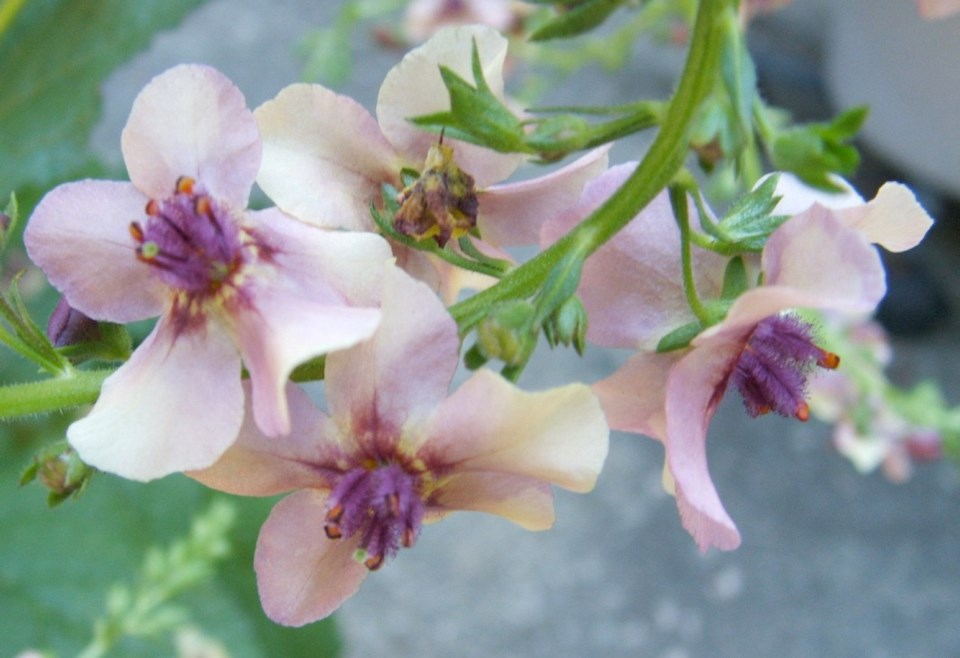Dear Helen: A visiting relative noticed that some of my shrubs are not doing well. The problem is roots from gigantic neighbouring trees invading the soil. He suggested that moving the young plants into large pots with the bottoms cut out would give the struggling plants a better chance. What do you think?
P.A.
I’m sorry to say that this won’t work. I’ve tried it. Wide-ranging roots will quickly fill the pots. They’ll even move into pots with the bottoms intact, through the drainage holes. More than once I’ve found a planted pot, stationed at soil level, anchored firmly to the ground by roots from a neighbour’s huge fir trees. Pots located in tree-root territory need to be elevated well above ground level, on bricks or some other elevating agent.
Dear Helen: Feverfew has seeded itself through parts of the garden. Should I be getting rid of it?
M.W.
Feverfew (Tanacetum parthenium, Matricaria parthenium) has a reputation for spreading enthusiastically. Removing dead flower heads will prevent excessive self-sowing.
Whether you keep some of the plants in your garden depends upon how well you like them. I took the feverfew plants in my garden out because I didn’t find them very attractive. Prettier and less invasive are named, cultivated forms of the species. Some are small plants for edging and containers; others are taller kinds grown for cut flowers.
Feverfew is a strong-smelling perennial with light green, lobed leaves and clusters of white, yellow-centred daisy-type flowers in summer. The plants grow about 60 centimetres tall.
Historically, feverfew is an interesting plant that has been used for various medicinal purposes through the ages. It is said that the Greeks called feverfew “parthenium” because the plant was used to save the life of a person who had fallen from the Parthenon.
This herb has been used traditionally to treat headache, digestive complaints and bruises. It is, however, a strong, pungent member of the daisy (Asteraceae) family. The plants contains volatile oils and compounds that can cause unpleasant reactions.
Some people do not react well to daisy family herbs, even the popular chamomile, which causes nausea in susceptible individuals.
Dear Helen: I have one Verbascum in my garden, and I’m wondering why this perennial is seen so seldom at garden centres. When I do find a plant, it often looks disreputable.
M.M.
I suspect that Verbascum plants are hard to keep in appealing display form in garden centres. In pots, the lifetime of the lovely, tall spires of bloom will be shortened. I’ve found the odd one. It pays to keep looking.
The plants are easy to grow from seed and quick to flower (chilternseeds.co.uk). Just stay away from the species, which self-sow too freely, and choose from named varieties. An example is Viburnum hybridum ‘Southern Charm.’
Weekend column. To free up some time for the garden, I’ll not be writing a Saturday column for the coming holiday weekend. The events here cover the period through to Wednesday, July 6. See you then. A Happy Canada Day to everyone on Friday.
GARDEN EVENTS
VHS meeting. The Victoria Horticultural Society meets Tuesday at 7:30 p.m. in the Garth Homer Centre, 813 Darwin Ave. Eryl Morton will present a photographic travelogue of South Africa, from an autumn 2015 tour of 20 private and botanic gardens. The pre-meeting workshop at 6:30 will feature the society’s accredited horticultural judge Jacqueline Bradbury sharing hints on gaining points on parlour-show exhibits.
Water garden tour. For the Love of Africa Society will host its 10th annual Water Garden Tour on Saturday, July 9, 9:30 a.m. to 4:30 p.m. This self-guided tour of 10 Greater Victoria water gardens will include musicians playing, artists, master gardeners and designers to answer questions on ponds, fountains and more. Tickets at $25 are available at various vendors and online. Find this information at watergardentour.ca or call 250-891-0762. Proceeds from the tour go to support the society’s current project, a trade school in Tanzania. fortheloveofafrica.ca.
Pollinator plants. Russell Nursery, 1370 Wain Rd. in North Saanich, is offering a free class on plants to attract pollinators with Ingrid Wood on Saturday, July 9, at 10 a.m. In this Year of the Pollinator, the push is on to plant gardens to attract and nurture bees and other pollinators. Learn about the best plants for this purpose. Space is limited. Reserve a place by email at russellnurseryoffice@telus.net. Include your phone number.



